Like I said, Monday offered perfect weather to extend my customary long bike ride. A lot. Instead of stopping at the Raccordo, I had resolved to continue to the sea and come back by train from Ostia. I made it, and I enjoyed it despite some faily hairy passages.
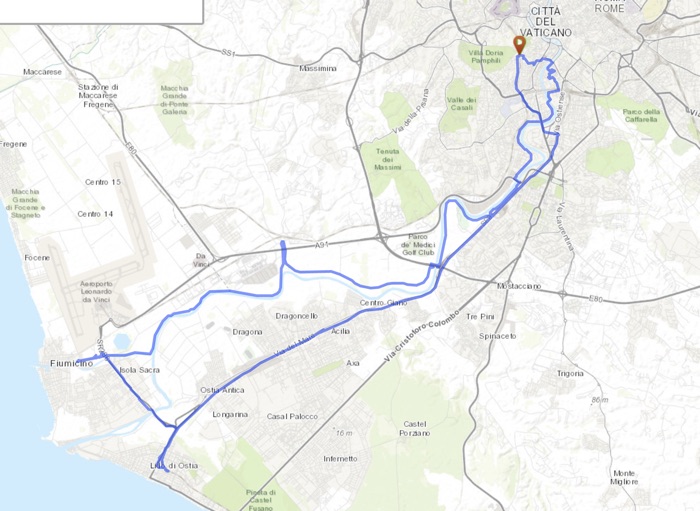
The first part of the ride is very familiar (and might be to you too if you have been following along) although I did start slightly further upriver than normal, where a new pedestrian bridge crosses the river just downstream of the old gasometer.

The ride out to the Raccordo was completely uneventful and pretty nice. The hybrid is every bit as much fun to ride as the Raleigh, and the slight ease of gear shifting makes up for the slightly livelier Raleigh. I reached my normal resting place, rested, and then looked forward to terra incognita.
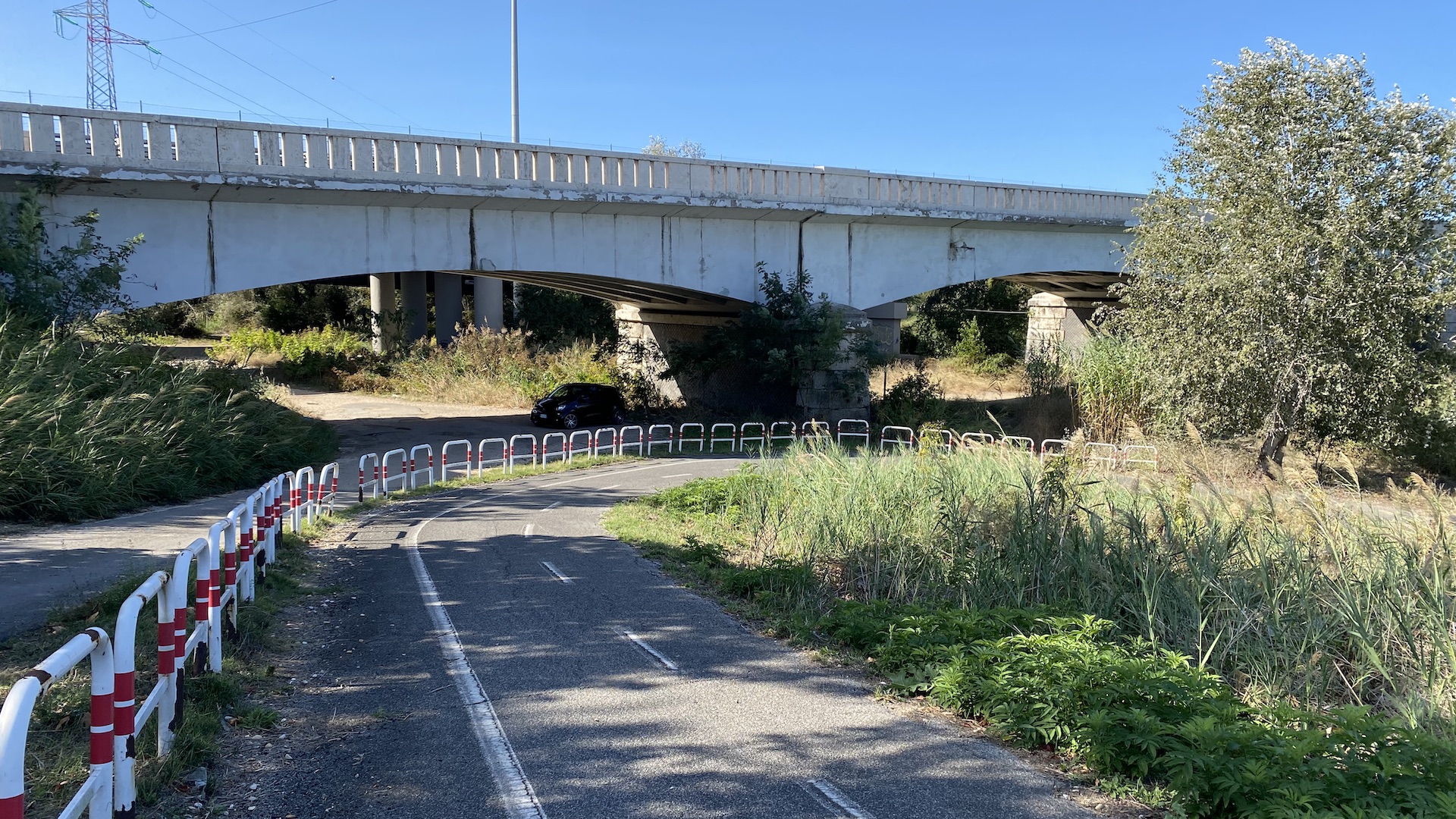
You have to push the bike up a steep, rough path to get to the cycle path that runs alongside the bridge, which isn’t the GRA proper, but a slip road. The path is wide enough to be easy to ride and is separated from the motor traffic, which is nice. From there, you descend under the bridge and the GRA, climb a little, and are faced with an unmarked fork. Both paths lead up, and it really isn’t clear which way to go because you can’t see very far in either direction. I went left and satisfied my inner Chingachgook by noting that there were indeed plenty of bicycle tire tracks going that way. So off I went, cycling below, and then climbing to the crest of, a dyke that I guess was about 4 m above the surrounding fields.
Truth be told, although there were nice views over the fields and away to the riverbank on my left, it just wasn’t very picturesque, hence the lack of pictures. It was also absolutely deserted. In the entire stretch of about 25 km, before I reached the next bit of proper paved path, I passed one gent walking and crossed with two cyclists coming the other way.
I did, coming in to Ponte Galeria, see some kind of raptor hovering over the stubble fields, swooping occasionally, but there was no way a photo would have been anything but a dark speck, and as I came forward it moved away. Even so, despite the ostensible lack of interest, I was enjoying myself immensely. No screen, no abstract thinking, just peddling, constantly alert to the surface and now and again changing up or down a gear. Doing something utterly different is the best part.
There are few things to note along the way. It is obvious that the land has been drained, and there are ditches as deep as the dyke is tall crossing the path here and there. Most still have remnants of hydraulic equipment, although it is hard to tell how often they might be needed.
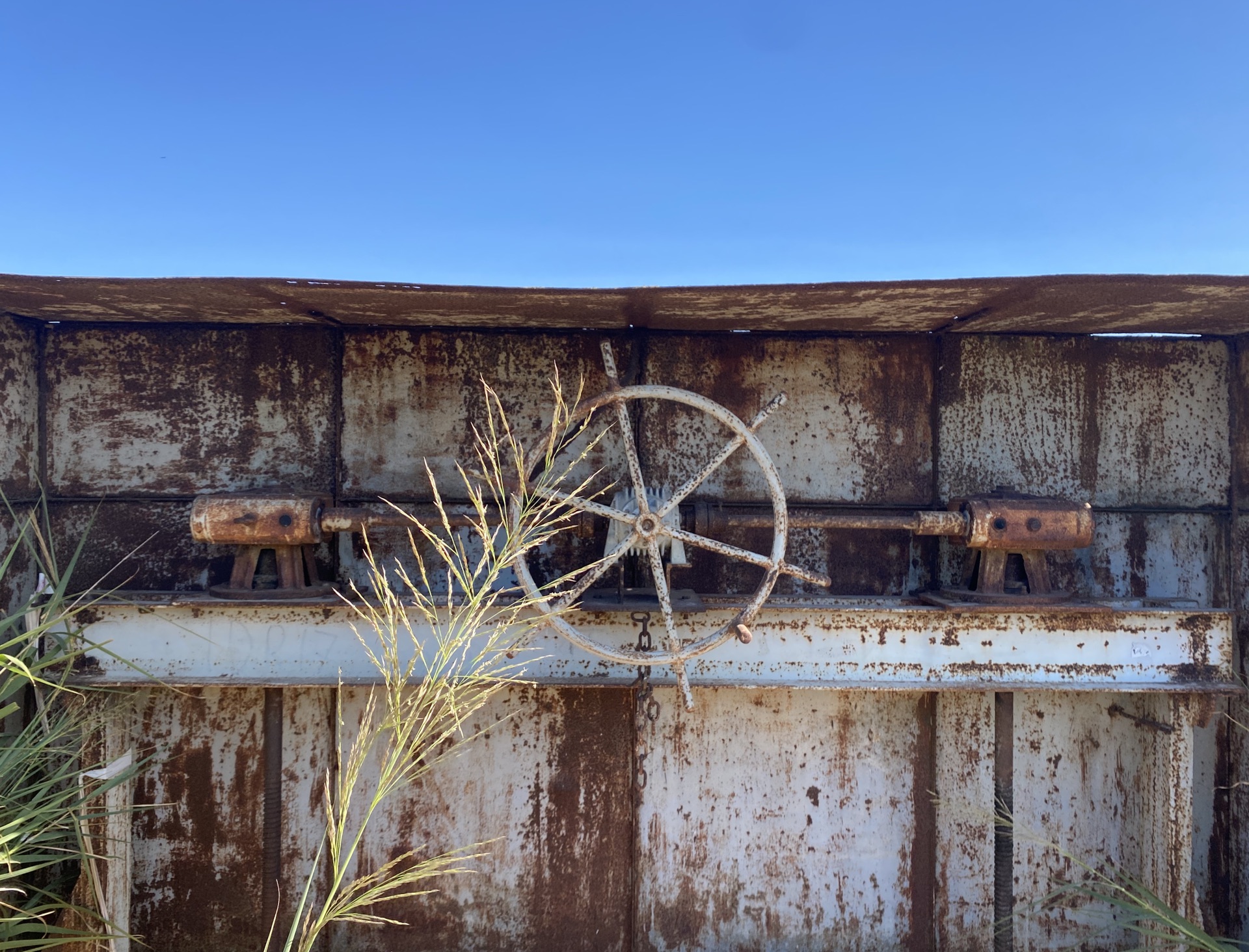
I also passed by what might have been a deconsecrated church on the outskirts of Ponte Galeria, but although there was a sign there, it didn’t say anything about the building, and online maps don’t know what it is either.
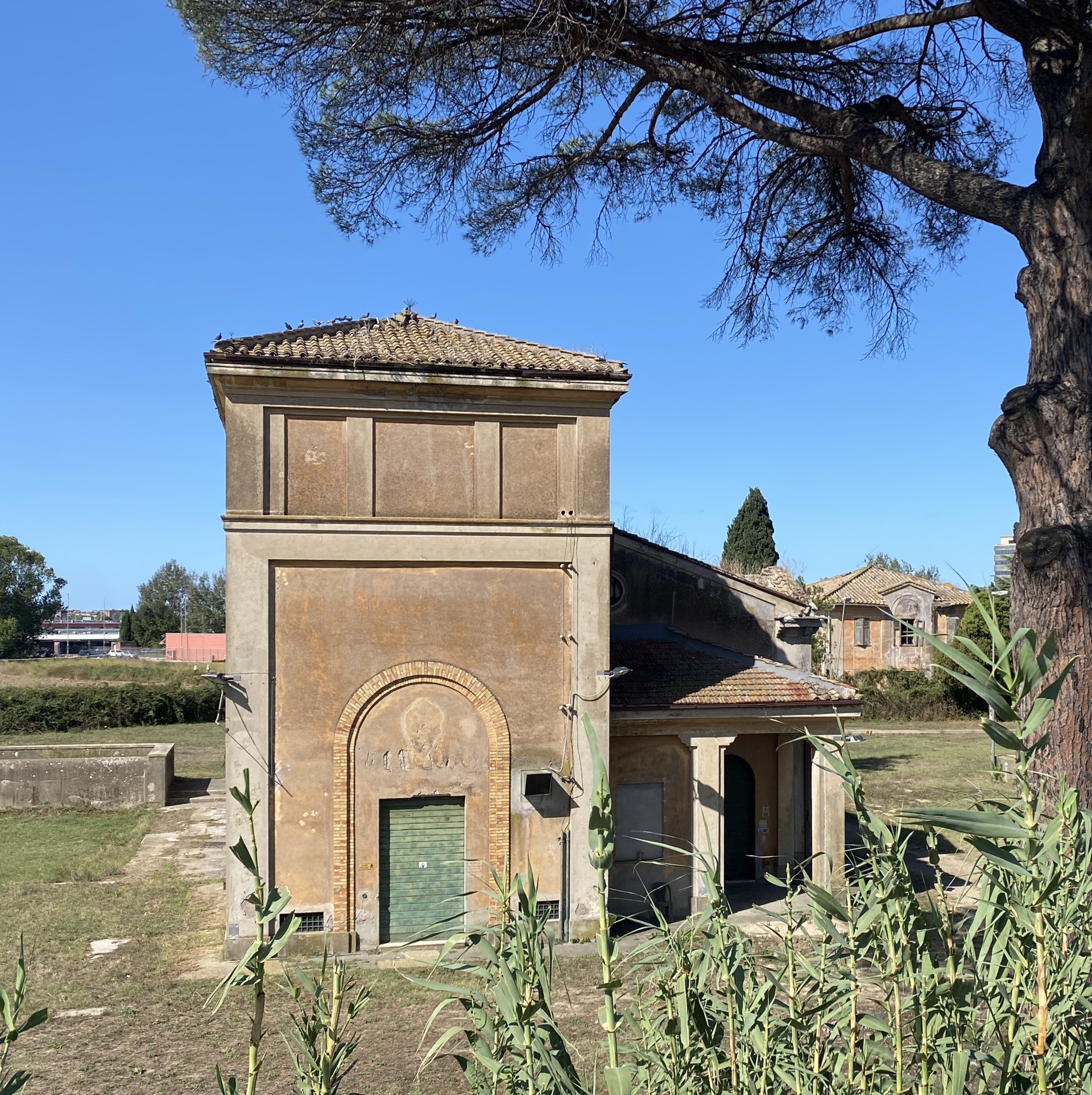
After that, the bike path goes down to the foot of the dyke on the river side and gets rougher and rougher. It narrows, becomes much more uneven and rutted, and the vegetation closes in. For long stretches, I found myself battling thickets of wild fennel. Then there would be a tunnel through overarching miscanthus grass. Trying not to get slapped in the face while also avoiding ruts and holes was pretty exhausting, and it wasn’t until I finished the ride that I noticed quite a few shallow cuts on my legs, where the miscantus had whacked me.
During all this, I became very conscious that I was getting closer and closer to Fiumicino airport. A plane went over roughly every five minutes, I reckon, but, as with the raptor, it didn’t seem worth stopping just to get a better than average photograph.
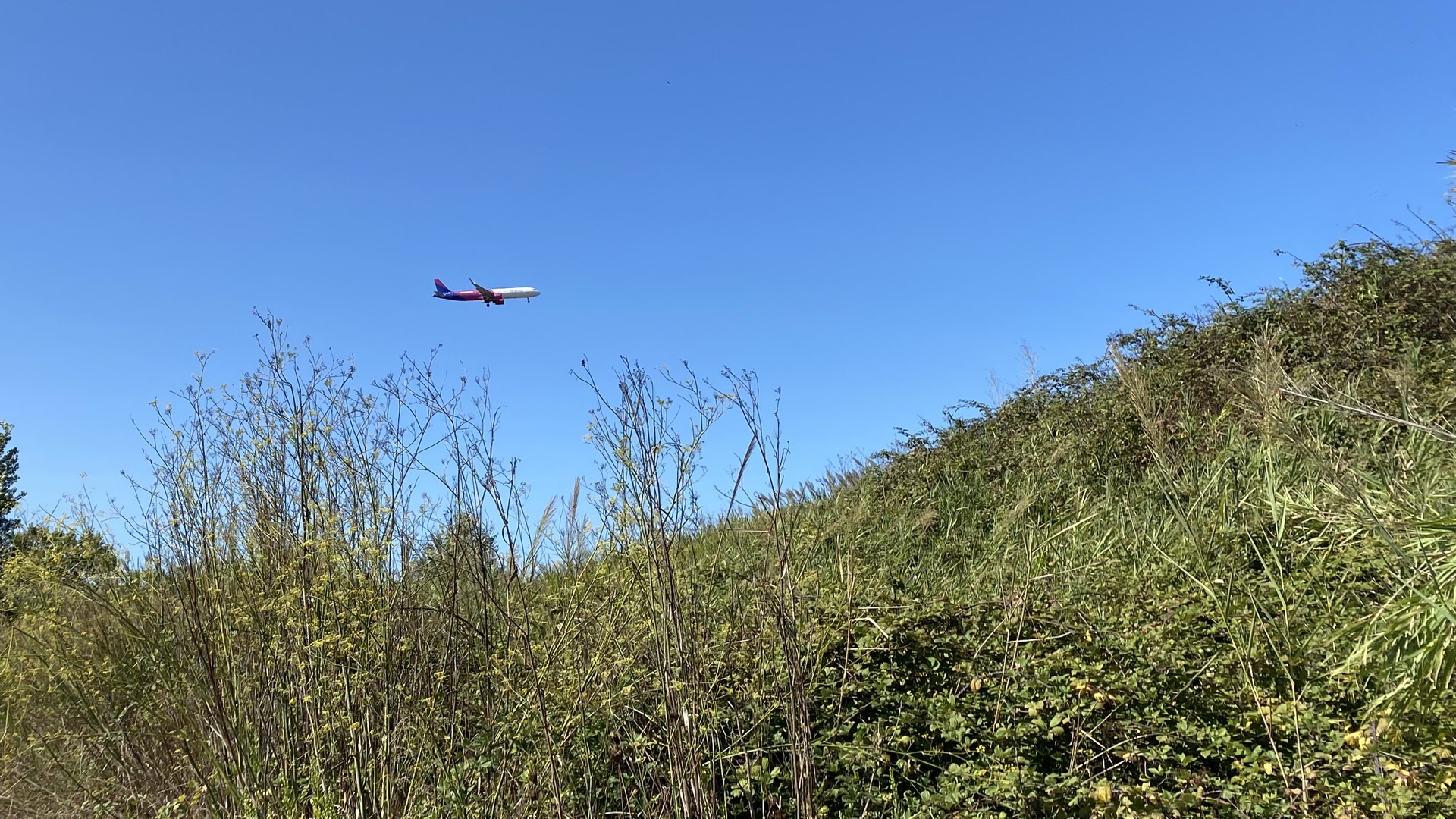
By this time, after about two hours in total, I was pretty hot and bothered. The path went as close to the river as it had been all journey, so I hoppped off for a little rest and rehydration.
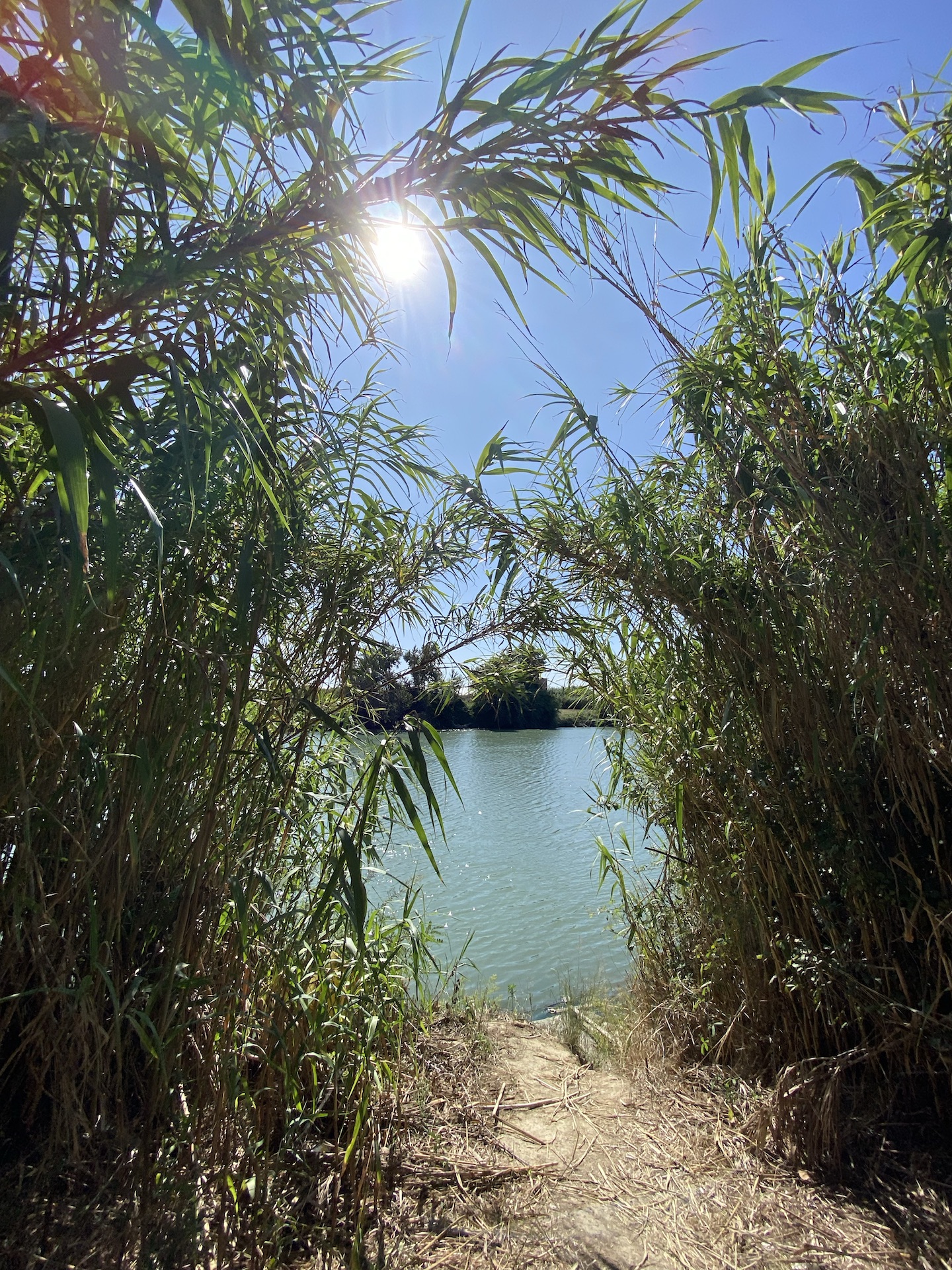
I didn’t realise it at the time, but this was the end of the very difficult section. The path climbed up a little way and tured into a beautiful, paved, two lane pedestrian and bicycle way. A little further on the bulk of the Parrochia di Santi Ippolito e Lucia rose up. That could be worth a visit one day, but there is no access from the cycleway.
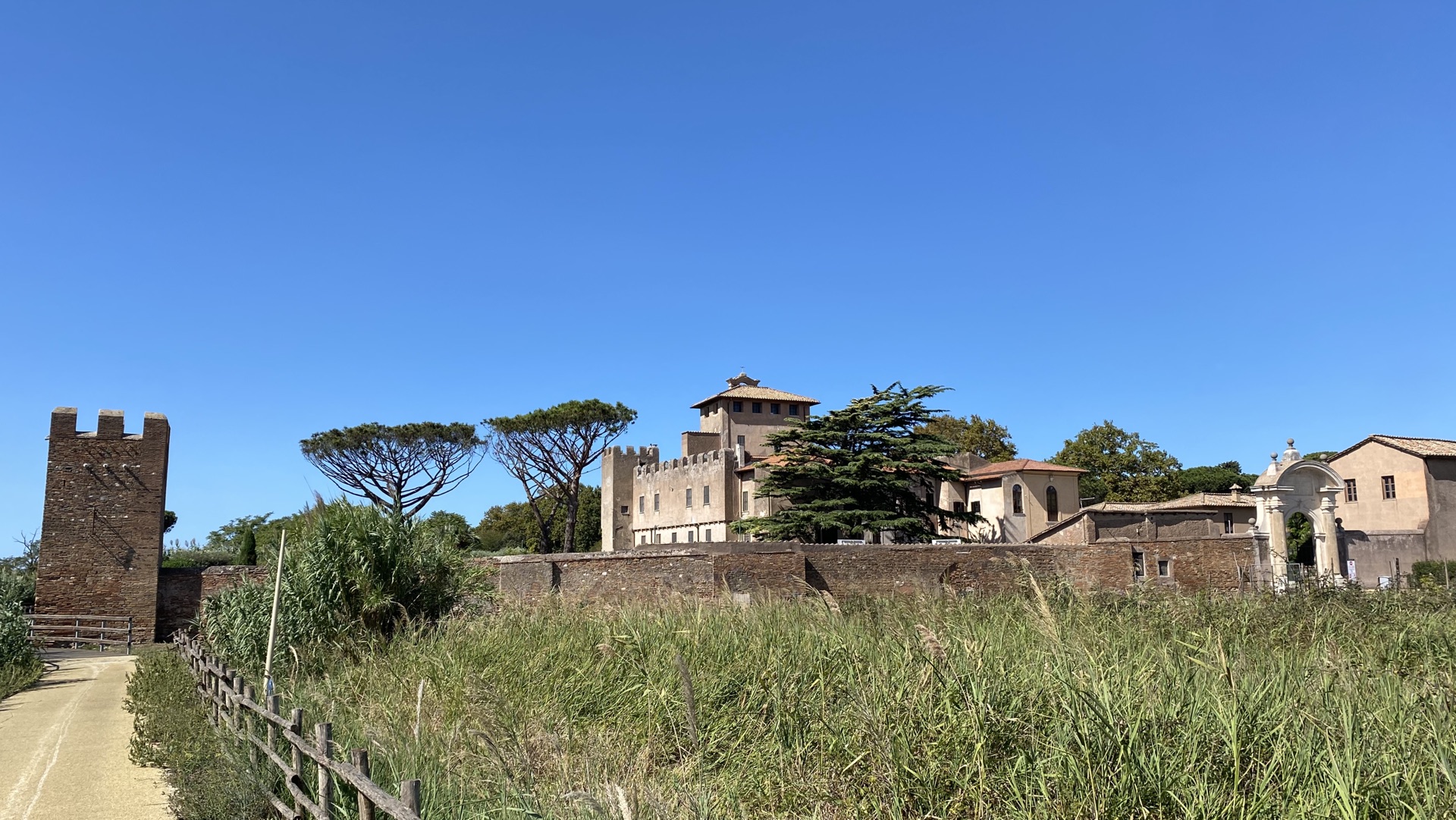
The lovely cycleway passes over the moat of the complex on wooden boards and then ends up in the town of Fiumicino.
At this point, I thought I was done. Just get to Ostia, a few km south, and catch a train home. But although I had looked at maps, I clearly had not paid enough attention to the presence of the river. The only way to get across the two branches of the Tiber was to take my chances on a large highway full of cars. So I did, and though it was occasionally hairy, in the end it wasn’t too bad. I reached the station, then found a place to sit and eat my lunch, only to discover that the bumps on the path had more or less annihilated my PB&J sandwich by mangling it together with the grapes I had thoughtfully packed with it. At least they were seedless. After that, a very nice train home, and a little ride of just over 4 km up the hills to home, knackered but extremely satisfied.
Next time: It occurred to me that it might be more sensible to take the train to Ostia and tackle the really bad part of the path while fresh. Also, at home and looking in more detail at the map, rather than squinting at my phone in the sunlight, there is a better way to get from Fiumicino to Ostia, which involves a much shorter stretch on the highway and which may even have a walkway next to the highway. All that is hindsight. I was perfectly happy with the way it all worked out in the end.
Webmentions
Webmentions allow conversations across the web, based on a web standard. They are a powerful building block for the decentralized social web.
If you write something on your own site that links to this post, you can send me a Webmention by putting your post's URL in here:
Webmentions
Comments